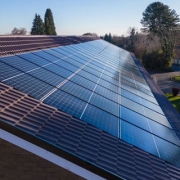The UK government has published an action plan aimed at ensuring faster delivery of large infrastructure projects such as offshore wind farms, transport links and wastewater management facilities.
“The plan we have published today demonstrates the commitment across government to ensuring the planning system supports us to improve our energy security and deliver the major transport links and essential facilities this country needs to thrive,” stated Local Government Minister Lee Rowley.
The policy paper “Nationally Significant Infrastructure: action plan for reforms to the planning process” was published by the Department for Levelling Up, Housing and Communities and applies to England and Wales.
The government wants to make the planning system for Nationally Significant Infrastructure Projects (NSIPs) better, faster, greener, fairer and more resilient. It says that between 2012 and 2021, the time it took for projects to go through the NSIP process increased by 65%, from 2.6 to 4.2 years. Its ambitions to improve the infrastructure consenting process were set out in the National Infrastructure Strategy in 2020 and included in the British Energy Security Strategy in 2022.
The action plan measures include reviewing National Policy Statements (NPSs) more regularly for better clarity to make decisions. The government also plans to speed up the application process by streamlining regulations and updating guidance. A fast track process will be piloted, with powers for the Secretary of State to set shorter timelines for certain projects.
The reforms are further intended to realise better outcomes for the environment, which will involve replacing the “cumbersome” environmental assessment processes with new Environmental Outcomes Reports. Measures to embed community input and benefits earlier in the process are also planned.
The government will seek to bring forward by the spring of 2024 the key regulatory and guidance changes needed to deliver the action plan.
Industry group RenewableUK welcomed the outlined planning reforms. “In particular, it’s good to see that Ministers have listened to industry on the need for early and meaningful engagement between project developers and the statutory bodies we work with, and a commitment to scale up the resources required within the planning system to make it work more efficiently, as this will enable us to deliver critical renewable infrastructure,” said the group’s environmental policy analyst Juliette Webb.
With respect to wildlife protection and the views of local communities Webb said: “The government’s proposals make it clear that the right balance will be struck to ensure that projects will only go ahead when those safeguards have been met, and we fully support this environmentally sensitive approach.”
Energy industry trade association Energy UK said on Twitter: “We’ve long called for planning reform and look forward to working with the government over the next months as they consult on how to put these changes into practice.”
Source: Renewables.com








